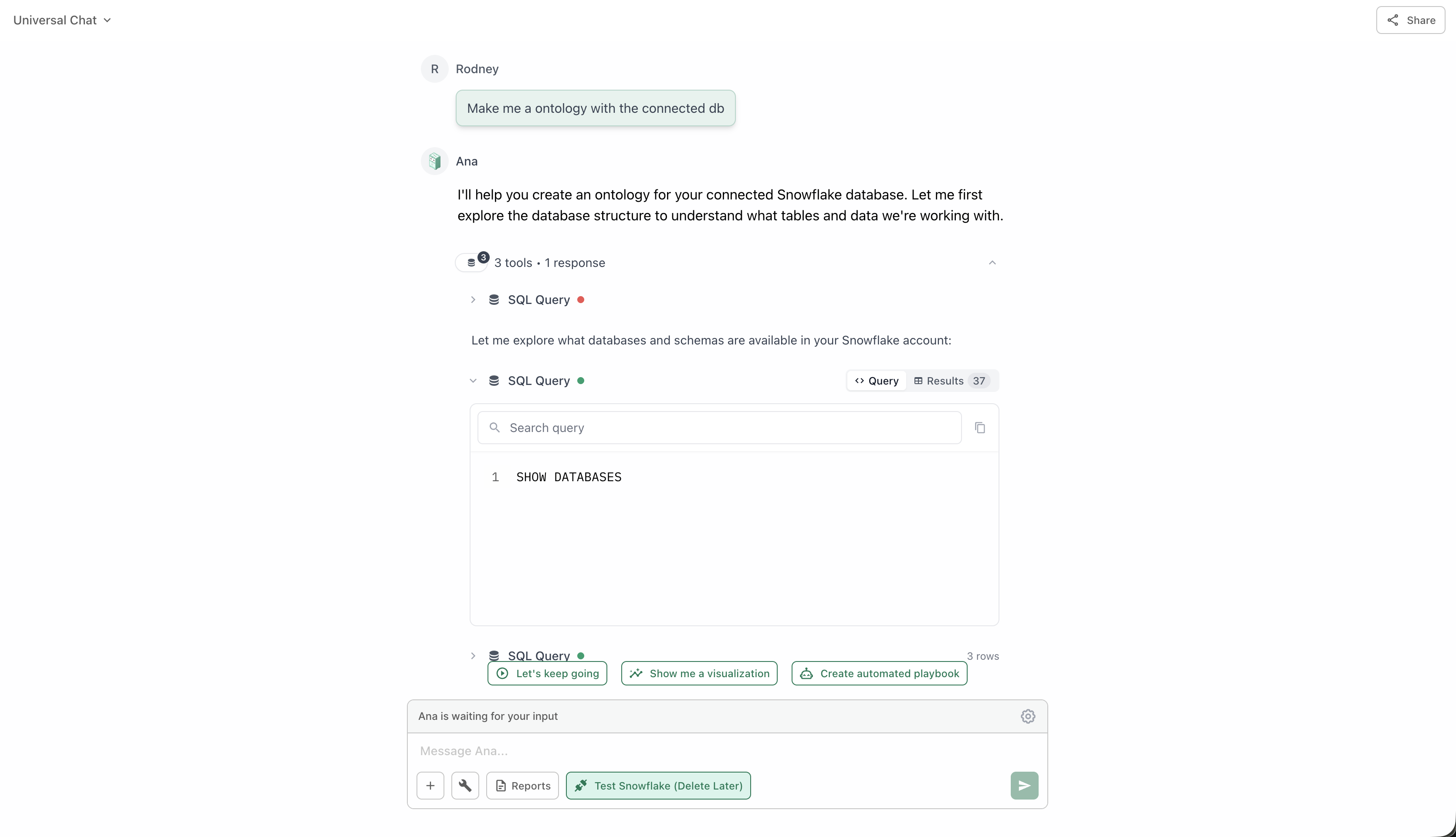This is Ana’s primary tool for data retrieval from your connected databases and warehouses.
How It Works
When you ask a question, Ana intelligently processes your request through these steps:1
Analyze Your Question
Ana parses your natural language question to understand what data you’re looking for.
2
Examine Database Schema
Inspects your database structure to identify relevant tables and columns.
3
Generate SQL Query
Constructs an optimized SQL query in your warehouse’s specific dialect.
4
Execute Query
Runs the query against your data warehouse securely.
5
Load Results
Automatically loads results as a pandas DataFrame in the Python sandbox for further analysis.

SQL Query Tool in action
When to Use
Data Exploration
“Show me the top 10 customers by revenue”
Trend Analysis
“What are our monthly sales for the past year?”
Aggregations
“Calculate the average order value by region”
Filtering & Joining
“Find all orders from customers in California with a value over $1000”
Available For
All connected database connectors:Cloud Data Warehouses
Cloud Data Warehouses
- Snowflake - Cloud data platform
- BigQuery - Google Cloud data warehouse
- Redshift - Amazon Web Services data warehouse
- Databricks - Lakehouse platform
- Azure Synapse Analytics - Microsoft cloud analytics
Traditional Databases
Traditional Databases
- Postgres - Open source relational database
- MySQL - Popular open source database
- Amazon Aurora MySQL - AWS managed database
- Supabase - Open source Firebase alternative
Specialized Databases
Specialized Databases
- ClickHouse - OLAP database for analytics
- Motherduck - Serverless analytics
- Athena - AWS serverless query service
Best Practices
Be Specific
Include details like column names, table names, and exact metrics you want to calculate.Good: “Show me total revenue from the
orders table grouped by month”Vague: “Show me sales”Mention Table Names
If you know the table names, include them in your question to help Ana target the right data.Example: “Query the
customers table for users who signed up this year”Specify Time Ranges
Always include date ranges when querying time-series data for better performance.Example: “Sales from January 1, 2024 to March 31, 2024”
Review the Query
Check the generated SQL to ensure it matches your intent and doesn’t miss any important filters.You can view both the SQL query and the results in the chat interface.